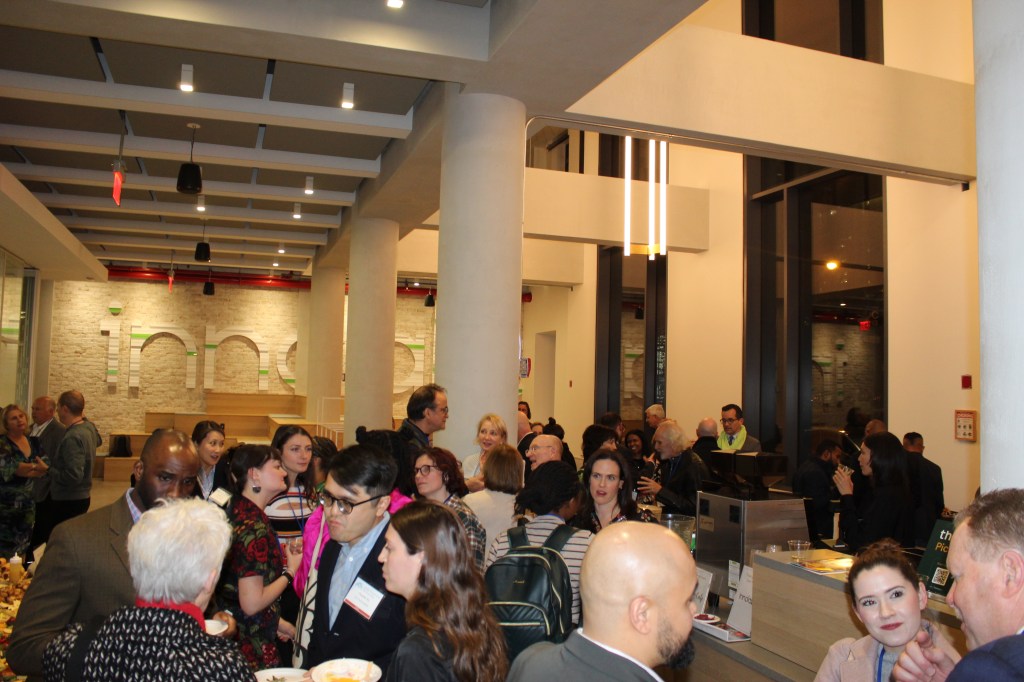The frequency of falling debris from the 7 train tracks in western Queens continues to test New York City Transit President Andy Byford as the MTA struggles between placing protective netting and being able to actually see the underbelly of the elevated tracks for inspection.
That was just part of the discussion at LaGuardia Community College in Long Island City on Monday night as transit officials answered questions from the public on a catalog of concerns.
One public query centered around station renovations similar to those completed on the N/W line that could be undertaken at 7 train stations to prevent debris from tumbling from the high-line tracks.
Byford said there are up to 60 miles of elevated tracks in the entire system and renovating all run-down stations along the 7 is not feasible at this time, although the agency is aware of the most problematic locations for decline.
Since elevated tracks are so extensive, Byford claimed that netting could be infeasible despite earlier claims that the MTA would move to deploy the safety feature.
“What we need to do ultimately is renovate the whole subway. There’s no question, there’s no sugar-coating that and a lot of our structures are over 100 years old,” Byford said. “Some people say we should put netting up. Well good, but we don’t want to rush into doing the wrong thing. For starters, it’s going to take time to fit all that … under 60 miles, it’s going to be expensive, so we want to do it right. We also don’t want to put a put up a system that poses a new safety risk. Any system must give the inspection crews the ability to see what’s going below the structure, it must also be robust enough.”
On June 3, after a piece of metal fell from the line near 53rd Street, about 10 to 15 feet from a pedestrian, New York City Transit said they would deploy netting in some places to evaluate the effectiveness of deploying the method for widely for public safety.
This was not an isolated incident.
In February and March there were instances where a wooden beam fell through the windshield of an occupied vehicle and another car that got struck by a chunk of metal. Nobody was injured in either incident, but it happened again to another car in Long Island City, followed by large bolt landing on a woman’s car under the A train in Richmond Hill.
“We’re not the only system that struggles with this issue and we’re not going to be able to tackle it just as New York City alone, so we’re working with other agencies throughout the country and the world to learn more about what they’re doing in terms of their elevated inspections. What they’re doing to secure the underside,” said Senior Vice President of Subways Sally Librera. “So we’re learning as we go.”
Byford prefaced the meeting by highlighting how far the system has come in the two years since what Governor Andrew Cuomo dubbed the “summer of hell.” Widespread delays, service meltdowns and a derailment at 125th Street in Harlem led to Cuomo declaring a state of emergency for transit in the subway.
The worst of these issues overlapped with Amtrak, which owns Penn Station, shutting down 20 percent of Long Island Rail Road tracks in the station to address of backlog of repairs.
To this, Byford attributed much of the improvement to employee empowerment and the deployment of Communications-Based Train Control (CBTC) to replace to century-old analog signals there were still in use.
Both the 7 train and the L have full deployment of CBTC which means the Flushing line can now run 29 trains per hour over the previous 22. But Byford said this capacity could be raised even further.
As consolation for the woes straphangers have experienced over the years across the city, Byford commented that the system is not irredeemable.
Not long ago, he noted, London’s underground was in a similar state and brought up to modern standards British commuters comparatively enjoy today.



































